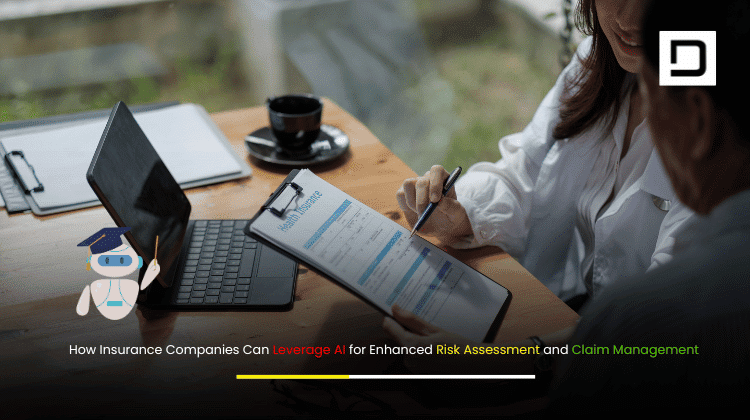Building an AI-Driven Insurance Claim Management System
Insurance carriers across health, life, auto, and property lines are under sustained pressure to process claims faster, personalize the claimant experience, and control loss ratios. At the same time, fraud tactics keep evolving and regulatory scrutiny keeps increasing. This is precisely where Insurance Claim Management System Development with an AI-driven architecture delivers measurable value. With the right design, AI can shorten first notice of loss to settlement times, detect anomalous behavior, extract insights from unstructured evidence, and guide adjusters to consistent outcomes.
In this guide, Depex Technologies lays out a practical blueprint for planning, building, and launching an AI-driven claim platform that is secure, explainable, compliant, and ready to integrate with your existing core systems. You will learn what components matter, how to wire AI into the claim life cycle, and how to phase delivery so that your business sees early wins while you build for scale.
What “AI-driven” really means in claims
The insurance claim process is a chain of interdependent decisions. It begins with intake and triage, moves through coverage verification and liability assessment, then proceeds to investigation, repair or treatment orchestration, settlement, subrogation, and recovery. An AI-driven system supports each decision point with predictions, recommendations, and automated actions. Importantly, the system does not remove experts from the loop. It elevates them.
When you approach Insurance Claim Management System Development, you should think about AI at four layers:
- Perception: Reading documents, images, videos, telematics, and call transcripts to extract structured data and context.
- Reasoning: Scoring severity, complexity, liability, and fraud risk with transparent models; ranking next best actions; forecasting settlement cost.
- Automation: Executing low-risk steps end-to-end, such as data entry, status notifications, and vendor scheduling.
- Assurance: Logging evidence, tracking rationale, and enforcing policy and regulatory rules with auditability.
This layered view keeps the design focused. It also makes it easier to phase capability releases and demonstrate ROI at each step.
Core platform architecture
A scalable architecture for an AI-enabled claim platform typically includes the following components:
Omnichannel intake
Claims arrive by phone, web form, mobile app, email, and partner APIs. Intake services normalize these sources into one canonical incident object. Natural language processing converts free-text descriptions into structured attributes. Computer vision extracts details from photos or scanned documents. Voice AI can transcribe and tag call center interactions for fast classification.
Data fabric and feature store
Claims require data from policy administration systems, billing, customer data platforms, vehicle and property databases, medical coding sets, repair networks, and public data. A governed data lake with a feature store provides consistent features to training and inference pipelines. This reduces leakage, improves reproducibility, and speeds experimentation.
Model services and decision engine
A microservice layer hosts specialized models: claim severity scoring, document classification, named entity recognition, fraud detection, image damage analysis, and propensity to litigate. A decision engine orchestrates rules and models so that coverage logic, policy clauses, and regulatory constraints are always respected. The engine also records explanation artifacts for adjusters and auditors.
Workflow and case management
A modern case management service assigns work to adjusters and vendors, enforces SLAs, and houses the communication timeline. The workflow layer is where straight-through processing rules live for simple claims. Human-in-the-loop checkpoints protect quality in complex scenarios and give the business full control of automation thresholds.
Integration hub
Your claim platform will not live in isolation. Prebuilt connectors and secure APIs integrate with core insurance suites, payment rails, repair networks, medical billing systems, identity verification vendors, and communications gateways. A publish-subscribe pattern ensures events flow reliably and asynchronously.
Security, privacy, and compliance
Role-based access, least-privilege principles, and field-level encryption protect sensitive data. Audit trails capture every decision, model version, and data source used. Data retention and masking rules align with regulations that apply to your geography and line of business. The platform must also support subject access requests and consent tracking.

First notice of loss with intelligence
The first minutes after a claim is reported shape the entire experience. An AI-aware FNOL module performs several high-value tasks immediately:
- Identity and policy retrieval: Matching claimant data with the correct policy and effective coverage dates, even when callers provide partial information.
- Intent detection: Classifying claim type, loss event, and environment (for example, hail, collision, slip-and-fall).
- Evidence capture guidance: In a mobile flow, a claim assistant can guide users to collect photos and videos at appropriate angles. Guidance improves model accuracy later.
- Severity and complexity scoring: Estimating whether the claim is eligible for straight-through processing or requires an expert.
- Fraud pre-screening: Checking known fraud patterns, unusual geolocation signals, or mismatched metadata to escalate suspicious cases.
Because the module is designed for omnichannel intake, these steps happen consistently whether the claim starts in a call center or on a smartphone.
Turning unstructured content into structured insight
Most claim data is unstructured: adjuster notes, medical reports, repair invoices, photographs, and PDFs. AI excels at transforming this content into fields that downstream systems can use.
- Document AI extracts dates of loss, limits, exclusions cited, ICD and CPT codes, repair line items, and subrogation candidates from scanned documents.
- Image understanding estimates damage zones, detects pre-existing damage indicators, and flags tampering.
- Speech-to-text with call analytics surfaces sentiment shifts, commitments made, and risk terms that require disclosure.
- Email and message classification routes correspondence to the correct case queue and creates tasks automatically.
By converting content into structured features at scale, you can standardize reviews, accelerate approvals, and reduce leakage.
Smart triage and routing
Once a claim enters the system, the triage layer determines the best path. An effective triage model considers severity, coverage type, jurisdiction, claimant history, and previous outcomes for similar events. It outputs two key recommendations:
- Assignment to the most suitable adjuster or team based on skills, licensing, capacity, and performance.
- Next best actions such as ordering an inspection, requesting a medical review, or sending a repair referral.
The triage layer learns continuously. When outcomes differ from predictions, feedback loops update the feature store and retrain models. This is where model governance matters. Every retrain must go through automated validation, bias checks, and approval gates before promotion to production.
Coverage and liability assessment
Coverage decisions must be consistent with policy language and local regulation. AI assists by:
- Parsing policy clauses and endorsements to highlight coverage-relevant sections.
- Mapping incident facts to coverage checks using a rules-plus-model approach.
- Summarizing case facts for adjusters in a short brief that links back to source documents.
- Estimating liability percentages for multi-party incidents based on precedents and historical outcomes.
These features do not replace expert judgment. They organize the evidence and surface risks early so adjusters can focus on material facts rather than manual data hunting.
Fraud detection that works in the real world
Fraud manifests in subtle ways. Single-metric rules are blunt instruments that either miss genuine cases or cause frustrating false positives. A modern fraud service blends graph analytics, anomaly detection, supervised learning, and risk signals from external data. It can connect seemingly unrelated entities across time and claim types. It can also score the likelihood of staged losses, invoice inflation, or collusive provider networks.
For operational safety, every fraud score includes the signals that drove the result. That explanation is shown to investigators along with suggested next steps. As investigators close cases, their actions become labeled data that improves future models. This continuous learning loop is a hallmark of effective Insurance Claim Management System Development.
Straight-through processing for low-risk claims
Not every claim needs human review. When coverage is clear, evidence is complete, and risk is low, straight-through processing can approve and pay claims automatically. The workflow engine checks required documents, applies rule thresholds, and executes payment in your chosen rail. It also triggers all downstream notifications and ledger entries.
To make straight-through processing safe, the system enforces several safeguards:
- Explainability cards show why a claim qualified for automation.
- Random sampling and post-payment audits validate outcomes.
- Drift monitors detect shifts in data or model behavior so the business can pause automation if signals change.
The result is faster service for simple claims and more time for adjusters to work complex cases.
Coordinating vendors and appointments
Claims often involve external vendors: repair shops, contractors, independent adjusters, medical providers, rental car companies, and legal counsel. The platform’s orchestration layer selects the right vendor based on location, cost, availability, and performance score. It sends structured work orders, tracks progress, and reconciles invoices against estimates.
AI enhances this layer with predicted cycle times, quality risk flags, and recommendations for alternate vendors if delays occur. Claimants receive clear timelines and alerts, reducing frustration and inbound calls. As vendor performance data grows, your network improves continuously.
Payments, subrogation, and recovery
Payment workflows are sensitive and regulated. The system calculates deductible applications, offsets, salvage values, and recurring benefits where applicable. It also identifies subrogation opportunities by spotting liable third parties, matching prior incidents, and estimating recovery probability. When the chances are high, the system generates demand packages with evidence exhibits for the recovery team.
Transparency matters here. Each computation step should be visible to auditors and customers. That transparency builds trust and reduces disputes.
Human-in-the-loop by design
AI changes how work flows, but it should not remove accountability or agency. The best claim platforms make experts more effective by:
- Providing “why” explanations for model outputs.
- Offering alternative recommendations with pros and cons.
- Allowing adjusters to override with required rationale, which then becomes labeled data for retraining.
- Highlighting policy or regulatory consequences of a decision before finalization.
This human-centered approach protects fairness and supports change management. It also accelerates adoption because adjusters see the system as an assistant, not a gatekeeper.
Model governance and risk management
Insurance is a regulated industry. Any platform that uses AI must implement governance from day one. That includes:
- Model inventory and lineage: Every model has an owner, a version, training data references, and a set of approved use cases.
- Validation: Pre-production testing covers accuracy, stability, calibration, and disparate impact.
- Monitoring: In production, the system tracks data drift, performance decay, and outcome variance by segment.
- Change control: Promotion requires documented approvals and rollback plans.
- Audit readiness: The platform can reproduce a decision with the exact model version and data snapshot used at that time.
In practice, these controls are automated where possible. That way, governance does not slow improvement and still keeps you compliant.
Privacy, security, and compliance
Claim data includes personal health information, financial details, and identity documents. Your platform should enforce:
- Encryption in transit and at rest with key rotation.
- Tokenization or field-level encryption for sensitive identifiers.
- Role-based access with multi-factor authentication and session controls.
- Regional data residency where applicable.
- Consent and purpose limitation tracking, including opt-out flows.
- Comprehensive audit logs that are immutable and queryable.
The platform must also support secure data deletion, legal holds, and structured responses to data subject access requests. This is not optional. It should be part of your non-functional requirements from the start of Insurance Claim Management System Development.
Interoperability with your core ecosystem
No insurer wants a monolithic replacement for existing systems if the current core is reliable. The platform should integrate cleanly with:
- Policy administration and billing.
- Customer communication tools for email, SMS, push, and chat.
- Payment processors and bank partners.
- Repair and provider networks.
- Analytics and reporting tools already adopted by your teams.
An event-driven integration style with idempotent APIs makes this robust. If a downstream service is temporarily unavailable, messages queue safely and retries occur without duplicating actions.
Analytics and operational intelligence
Beyond individual claims, the platform becomes a source of strategic insight. You gain:
- Real-time dashboards for inventory, cycle times, leakage, and settlement distributions by line, region, and channel.
- Cohort analyses that reveal which actions shorten resolution and which vendors deliver the best outcomes.
- Heatmaps of fraud risk, litigation propensity, and subrogation yield.
- What-if scenario tools to test policy or workflow changes before you deploy them.
These insights help claims leaders guide staffing, training, and investment decisions with evidence rather than intuition.

Phased roadmap to delivery
A successful program balances ambition with rapid value. At Depex Technologies, we recommend a phased roadmap that reduces risk and builds momentum:
Phase 1: Foundations and early wins
Stand up the intake service, data lake, feature store, and core workflow. Launch two AI capabilities that are ripe for quick impact, such as document extraction and triage scoring. Measure time saved and accuracy gains. Establish model governance. Set up dashboards and feedback loops.
Phase 2: Automation and advanced analytics
Enable straight-through processing for the cleanest claim cohorts. Introduce fraud scoring and vendor orchestration improvements. Expand integration coverage. Start A/B tests on communications and task sequences to reduce cycle times.
Phase 3: Scale and continuous learning
Roll out explainable liability assistance, subrogation prediction, and call analytics. Add active learning pipelines so new labeled examples flow back to training. Implement retraining cadences with automated validation. Expand to new lines of business.
This approach is realistic. It proves value early, aligns teams, and builds a culture of continuous improvement.
Change management and adoption
Technology is only half the story. People and process make transformation stick. That is why the project must include:
- Clear role definitions for adjusters, investigators, and supervisors in the new workflows.
- Training that demonstrates how AI recommendations are created and how to challenge them.
- Communications that celebrate early wins and explain how automation frees time for higher-value work.
- Performance metrics that recognize quality and customer outcomes, not just speed.
When teams see the benefits, adoption becomes natural and durable.
Testing strategy for quality and trust
In a claim platform, quality means accuracy, safety, and fairness. Your test strategy should include:
- Unit tests for transformation logic and rules.
- Golden datasets for model regression tests.
- Red-team scenarios for adversarial inputs and fraud tactics.
- Shadow deployments to observe model behavior before go-live.
- Post-deployment guardrails that allow gradual rollout by percentage or cohort.
These practices make launches uneventful and help stakeholders trust the results.
Cost considerations and ROI signals
Budget owners want clarity. The cost of Insurance Claim Management System Development depends on scope, legacy complexity, data readiness, and integration depth. However, several levers consistently drive ROI:
- Labor hours saved by document automation and straight-through processing.
- Improved accuracy that reduces leakage and rework.
- Fraud savings from better detection and targeted investigation.
- Faster cycle times that lift customer satisfaction and retention.
- Subrogation improvements that add recovery revenue.
Because you can track these metrics from Phase 1, you can tie platform investment to outcome gains transparently.
Why partner with Depex Technologies
Depex Technologies builds AI-enabled platforms that align to your risk appetite, governance requirements, and core system realities. Our approach is practical and measurable. We create a shared delivery plan with your claims leaders, IT stakeholders, security officers, and compliance team. And we also start with your highest-value bottlenecks and integrate new capability without disrupting operations. We bring reusable accelerators for document AI, decision orchestration, feature stores, and vendor integration. Most importantly, we build with explainability and auditability from the start so regulators and auditors are comfortable and your teams feel confident.
Conclusion: move from aspirations to outcomes
The distance between manual, reactive claim handling and an intelligent, experience-driven claim platform is no longer a multi-year leap. With the right architecture, strong governance, and a phased roadmap, you can turn AI into consistent, compliant outcomes that your customers feel every day. You can settle clean claims faster, guide adjusters to better decisions on complex cases, reduce leakage, and illuminate fraud risk before it hurts your loss ratio.

If you are planning Insurance Claim Management System Development, Depex Technologies is ready to help you move with speed and certainty. Our team will assess your current landscape, design a target architecture that fits your business, and deliver a secure, explainable platform that integrates cleanly with your core systems. Contact with Depex Technologies to plan your AI-driven claim program and accelerate value from day one.






